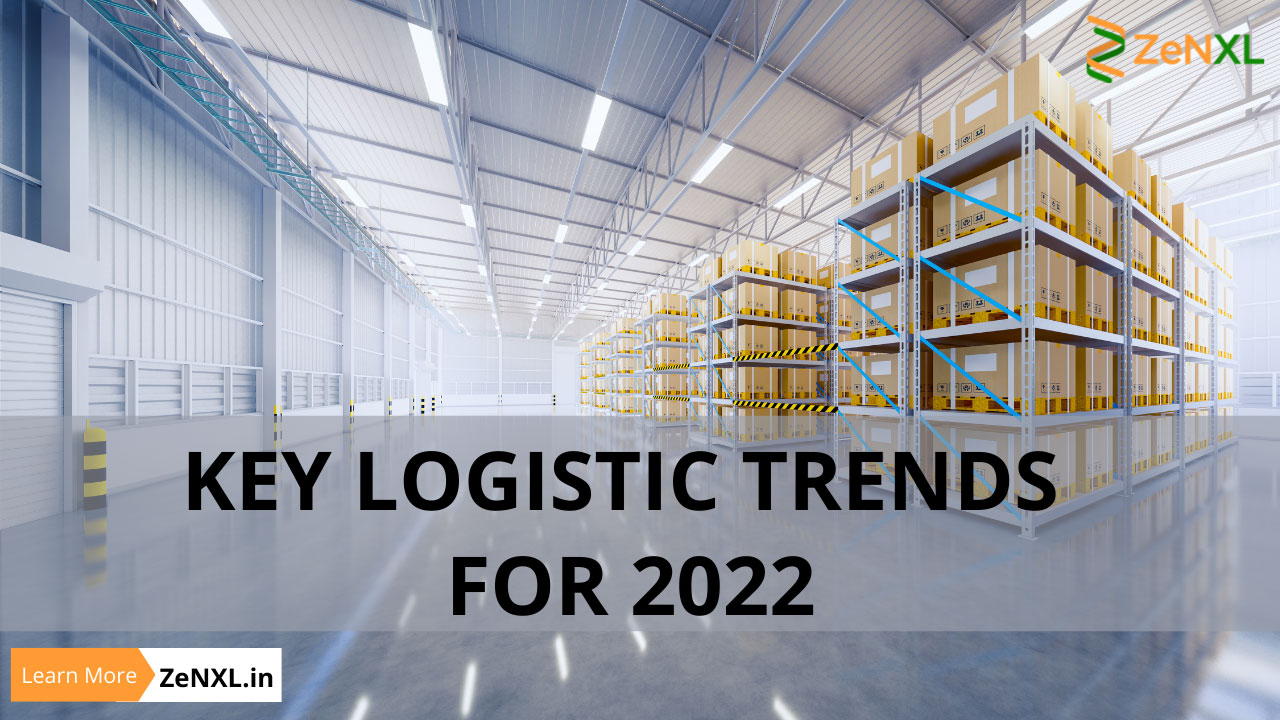The last two and half years have been very challenging for the logistics Industry with disruptions on account of the pandemic, turbulent shifts in consumer demand, and economic & political crises. Despite this, the industry has seen novel implementations pushing the boundaries of service like the technology-driven innovations in business processes. We are midway through the year 2022, and there are still many key trends shaping the Logistics Industry in India and globally with new technologies, practices, and standards to carry them. We have explained here the key logistics trends for 2022.
List of Key Logistics Trends for 2022
- Shrinking Product Mix by Shippers
Manufacturing Companies are considering shrinking their product mix, allocating more inventory to essential items, reducing nonessential inventory, and introducing innovative packaging and materials-handling processes to reduce levels of human contact. Instead of keeping large regional warehouses, companies are preferring smaller warehouses at more locations to keep supply chains agile. - Multi-Modal Transportation & Outsourcing to 3PL
In the transport function, we see using efficient multimodal transportation more extensively – tactical choices among less than truck loads (LTL), full truck loads (FTL), and milk run for delivering goods. At present, the logistics market in India is dominated by the road transportation sector (60%); However, multi-modal connectivity and last-mile reach are soon becoming a reality with many government infrastructure initiatives. 3PL Logistics and e-commerce are the largest lessors of the warehousing space with more than 60% share. More companies are outsourcing their non-core business operations to experts and focusing on the core areas for faster growth. - Real-Time Supply Chain Visibility
Real-time Supply Chain Visibility has become essential hygiene, especially for the food and pharma supply chain sectors. Accurate tracking of shipments throughout the supply chain ensures the quality and authenticity of products. Companies that lease space in warehouses are demanding more streamlined and automated processes. - Cloud-based systems and integrations
Logistics businesses today streamline their workflows, store and transfer information quicker and more securely, and even have better control over their finances, all because of Cloud-based systems and integrations. This leads to saving time, and money, as well as benefit from smoother internal processes. - Artificial Intelligence is used to support demand fluctuations
AI-based software solutions help in price prediction, demand forecasting, and optimization of flows & processes, catering mainly to the consumer-packaged goods and retail industries. This helps managers to provide actionable insights on product replenishment. - Efficiency in last-mile delivery
Last-mile delivery is always a challenge for logistics companies, presenting a high degree of complexity and high costs; however, the adoption of new technologies is making this simpler such as using autonomous drones to deliver individual packages. - Growth of Autonomous Vehicles
Autonomous delivery vehicles help in reducing costs and increasing efficiency in the delivery of packages. Though it’s still at the nascent stage, companies are planning to go big when it comes to competing for high-quality cargo, without worrying about driver shortages.
Conclusion
The new-age logistics management solutions are all about making supply chains customer-centric and sustainable. The improvement of transparency and traceability of the supply chain has become vital to logistic business. And it is also the key driving factor for success.



